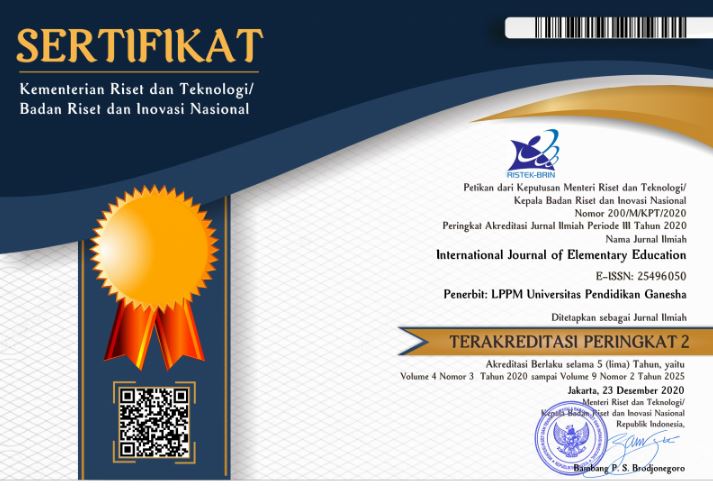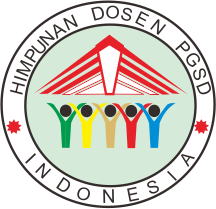The Effectiveness of Game Based Learning Utilizing Snakes and Ladders Media on Javanese Script Learning Outcomes
DOI:
https://doi.org/10.23887/ijee.v8i3.78934Keywords:
Game Based Learning, Learning Media, Snakes and Ladders, Javanese Script, Writing CompetencyAbstract
This research is motivated by students' difficulties in writing Javanese script. The purpose of this research is to determine the effectiveness of using a game-based learning model using a snakes and ladders media on students' learning outcomes in writing Javanese script in fifth grade. The type of research used is quantitative research with an experimental method. The research design uses a quasi-experimental design with the type of research being one group pretest-posttest design. The population and sample in this research were fifth grade students totaling 27 students. The sampling technique in this research uses purposive sampling technique, where samples are taken with certain criteria. Data collection methods in this research were observation, tests, and documentation. Based on the research results, a paired sample t- test was obtained at 0.000 and an N-Gain test at 0.5321. The results of the data analysis indicate that the game-based learning model mediated by snakes and ladders is effective enough to improve students' learning outcomes in writing Javanese script. Thus, it is expected that the game-based learning model using snakes and ladders media can have a positive impact on improving learning outcomes in writing Javanese script.
Published
How to Cite
Issue
Section
License
Copyright (c) 2024 Citra Dwi Fitriani, Nur Hanifah Insani

This work is licensed under a Creative Commons Attribution-ShareAlike 4.0 International License.
Authors who publish with the International Journal of Elementary Education agree to the following terms:
- Authors retain copyright and grant the journal the right of first publication with the work simultaneously licensed under a Creative Commons Attribution License (CC BY-SA 4.0) that allows others to share the work with an acknowledgment of the work's authorship and initial publication in this journal.
- Authors are able to enter into separate, additional contractual arrangements for the non-exclusive distribution of the journal's published version of the work (e.g., post it to an institutional repository or publish it in a book), with an acknowledgment of its initial publication in this journal.
- Authors are permitted and encouraged to post their work online (e.g., in institutional repositories or on their website) prior to and during the submission process, as it can lead to productive exchanges, as well as earlier and greater citation of published work. (See The Effect of Open Access)








